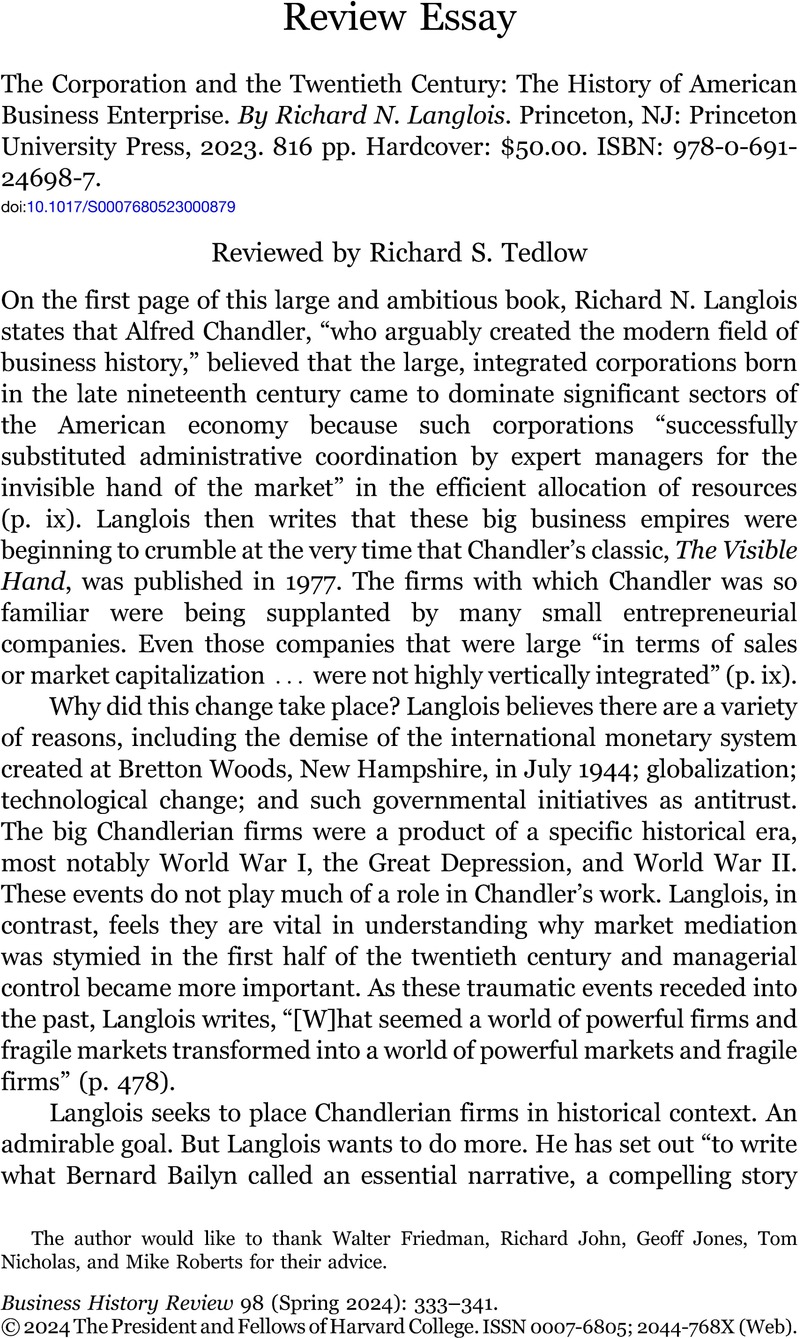No CrossRef data available.
Published online by Cambridge University Press: 05 August 2024

The author would like to thank Walter Friedman, Richard John, Geoff Jones, Tom Nicholas, and Mike Roberts for their advice.
1 Werner Sombart, “Capitalism,” Encyclopedia of Social Sciences [1930], p. 200, as quoted by Chandler, Visible Hand, p. 8.
2 Langlois, p. 648, fn51, referencing Andrei Shleifer and Robert W. Vishny, “Takeovers in the ’60s and ’80s: Evidence and Implications,” Strategic Management Journal 13 (Winter 1991): 56.
3 I am grateful to Walter Friedman for bringing this to my attention.
4 On this point, see Richard R. John’s outstanding essay “Elaborations, Revisions, Dissents: Alfred D. Chandler, Jr.’s, ‘The Visible Hand’ after Twenty Years, Business History Review 71, no. 2 [Summer 1997]: 160, n.27.
5 The phrase is Robert A. Burgelman’s. See “Fading Memories: A Process Theory of Strategic Business Exit in Dynamic Environments,” Administrative Science Quarterly 39, no. 1 [March 1994]: 24-56, cited in Burgelman, Strategy is Destiny: How Strategy-Making Shapes a Company’s Future (New York, 2002), 7, n.6.
6 Burgelman, Strategy is Destiny, 140, as quoted in Richard S. Tedlow, Andy Grove: The Life and Times of an American (New York, 2006), 224.
7 JR Research, “Intel: Dead Money Walking, Avoid,” 26 May 2023, Seeking Alpha, accessed 11 Oct. 2023, https://seekingalpha.com/article/4607609-intel-dead-money-walking-to-avoid.
8 Jack Flynn, “18 Average Screen Time Statistics [2023]: How Much Screen Time is Too Much?” 10 March 2023, Zippia, accessed 11 Oct. 2023, https://www.zippia.com/advice/average-screen-time-statistics/.